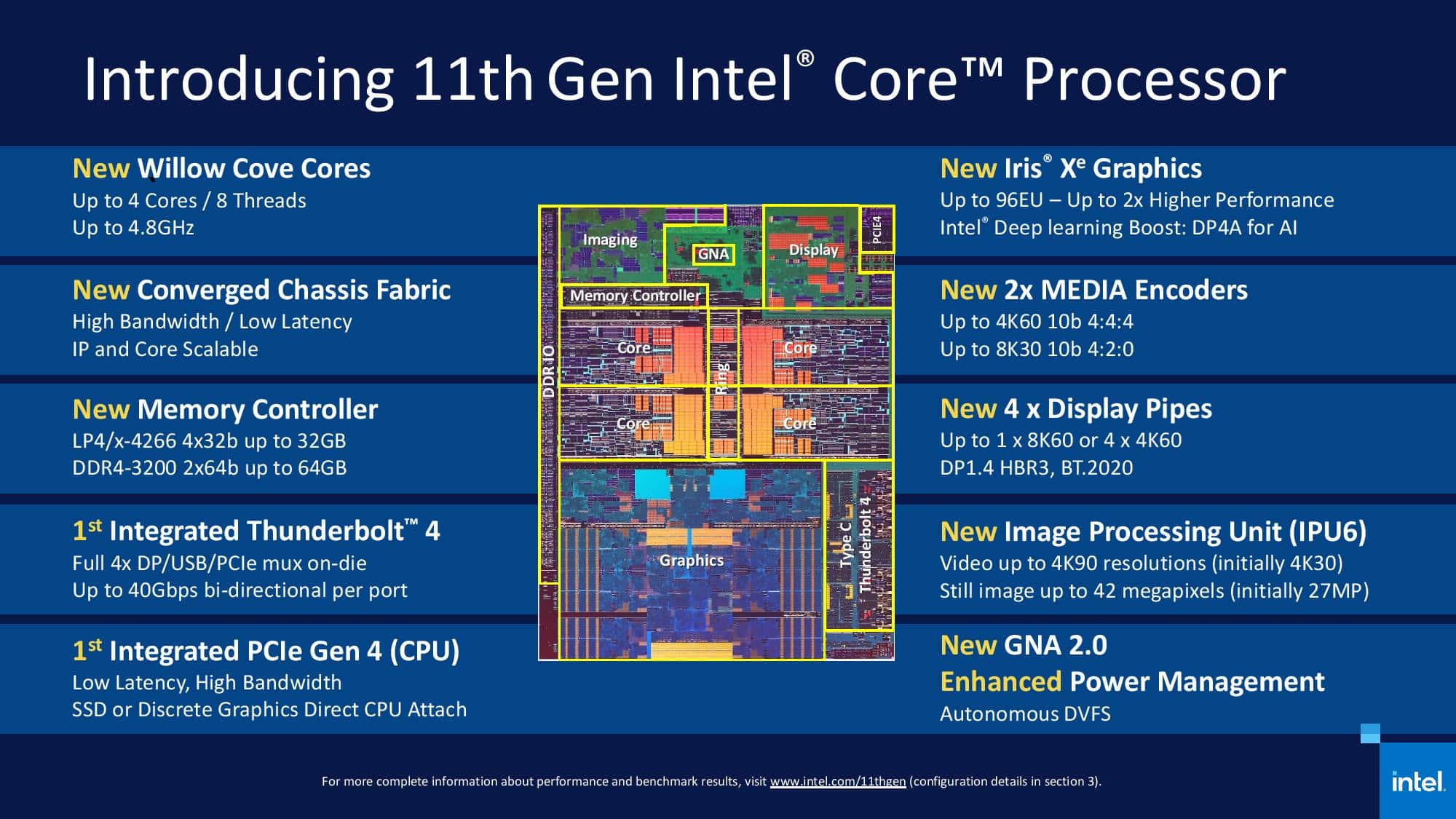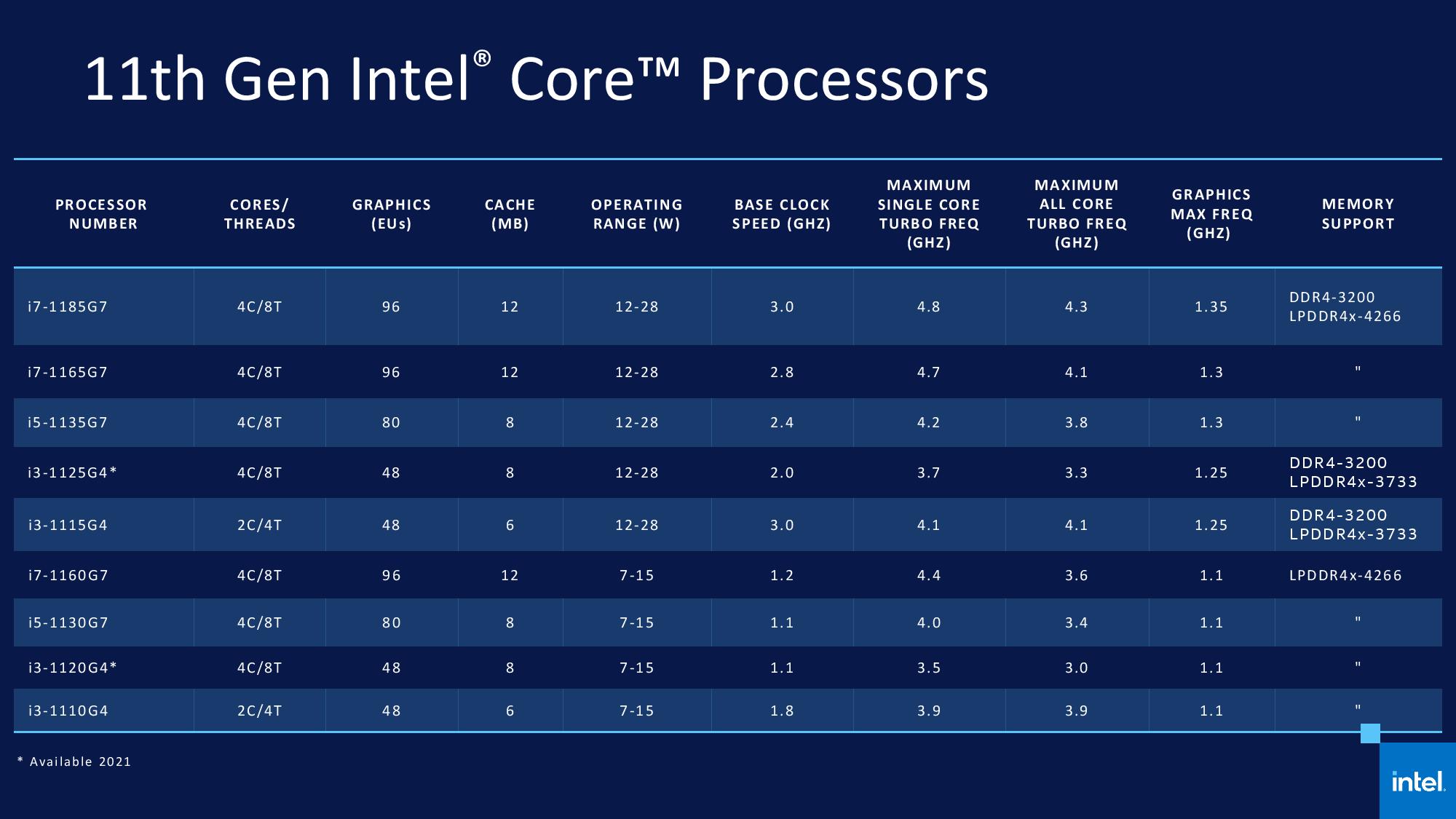Leading the pack, is the Core i9-11900K, Intel’s latest flagship processor with eight nodes, sixteen threads, and up to 5,3GHz increased clock speeds, support for DDR4 RAM 3,200MHz, a limit of twenty PCIe, 4.0 lane, and Intel’s 400 series chipset backward compatibility. Eagle-eyed fans of Intel can note that, on paper, the new chip actually downgrades the Core i9-10900K last year, which provided 10 cores, and 20 threads (and a similar boosted clock speed of 5.3GHz). This is since Intel has unveiled its 11th Gen Rocket Lake-S chips, named Cypress Cove, for the first time in more than half a decade. The company’s microarchitecture, which it uses since 2015 is 6th Gen processors, has eventually been replaced by Cypress Cove. However, Cypress Cove concept is not currently yet a recent microarchitecture — Intel’s Willow Cove chip designs and innovations were used by the firm on its eleventh Gen 10nm Tiger Lake processors, which are supported by Intel’s 14-nm manufacturing technology. The benchmarks from Intel claims: the i9-11900k, the Core i9-10900K, delivered an 8-14% improvement in games such as Gears 5, Grid 2019, Microsoft Flight Simulator, and TotalWar: Three Kingdoms, head to head. Intel also reports that its top chip is the Ryzen 9 5900X processor for AMD, even though it is marginally smaller (between 3 and 11% faster, depending on Intel benchmarks).
That said, all the experiments in Intel have taken place at 1080p such that we have to keep up to a wider variety of games, in particular 4K, to obtain a more detailed benchmarking. With up to 50 percent improved embedded graphics in contrast to Gen9, the new architecture is also further enhancements due to the new graphics in Xe with one third more EU than its graphics in Gen9. However, as these laptop chips are almost definitely coupled with a standalone high-end graphics card, this does not represent the most revolutionary improvement. Intel will sell several F-series versions of the latest GPU-free processors, but the general architecture of all models is identical. This means that Intel will sell no embedded GPU niche versions to try to suit more cores for now, at least. There are also some enhancements in the current processors. Resizable BAR is added to the 11th Gen chips for boosting the frame rate on compatible Nvidia and AMD cards. Both USB 3.2 Gen 2×2 and Intel’s own Thunderbolt 4, along with DDR4-3200 RAM, are supported. Four additional Gen 4 PCIe lanes were added by Intel, for a total of 20.
Intel is now launching the five hundred series motherboards along with the latest processors, much as usual with the big new start of a chip, but the Rocket Lake-S CPU is compatible with 400 series motherboards. There are additionally new overclocking solutions for consumers who want to squeeze out more capacity from new processors. In particular, Intel’s Extreme Tuning Tech is being upgraded alongside the eleventh Gen chips with a new UI and other revised features.

